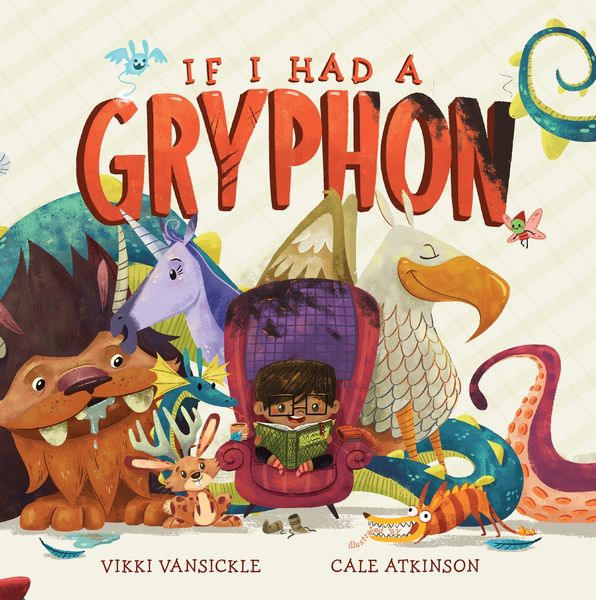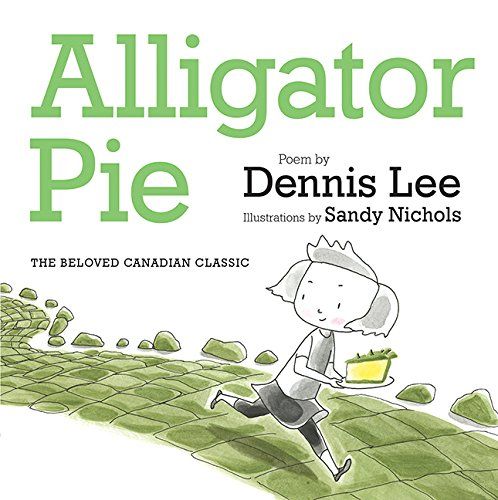To Rhyme or Not to Rhyme
By Vikki VanSickle
Nothing is as divisive as rhyme in children’s picture books. When it works, it sings, but when it doesn’t, it can turn readers (and editors) right off. Many people have fond memories of their favourite rhyming childhood books and channel this into their own first attempts at writing picture books. Before you crack open that rhyming dictionary, here are some things to consider.
Why are you using rhyme?
What is it about this story that demands a rhyming text? You most often find rhyme in picture books intended for the very young, ages 0-3 years. These books closely resemble lullabies and simple songs, a staple of early childcare entertainment. Listening to rhyme is like listening to music, there is an obvious metre that draws the listener in.
I have written two picture books in rhyme. The first, If I Had a Gryphon, is for young children, and intended to make them laugh. It’s also a whimsical story, and the somewhat fanciful language suits the content and the tone. I also use the rhyme to ramp up the tension.
The first animal we meet (unicorn), gets three whole stanzas. As the animals get wilder and more difficult to manage, they get shorter sections, so when we get to the climax of the book, we get a rapid-fire section of 8 creatures in a single stanza with a single line, effectively mirroring the narrator’s frantic feelings.
I have an upcoming picture book for slightly older children (ages 4-8) that is an unofficial sequel to Christina Rossetti’s poem, The Goblin Market—called, helpfully— Into the Goblin Market. I wanted to evoke the spirit of the original and did so by using a similar rhyme and metre scheme. I could have (and attempted to) write this in prose, but part of the magic of Rossetti’s poem is that the language casts a spell on the reader, and I wanted to do the same. And everyone knows that spells just feel better in rhyme.
Lest you think I have something against prose, I have two prose picture books and an upcoming YA novel in (unrhyming) verse. It’s all about what vehicle best suits the story.
Each rhyme is a mini “reveal”
Everyone loves a good reveal, whether it’s a whodunit scenario, a well-timed flashback, or the perfect word at the end of a rhyming couplet. Part of the joy of rhyme is knowing that an upcoming word is going to rhyme, and the satisfaction of learning what the word is. I don’t believe young readers are necessarily conscious of this thought process, but it’s evident to me every time I read If I Had a Gryphon aloud to kids and they figure out I’m about to say “tooth” and they can shout it with me. The fun we’re all having!
Your CanLit News
Subscribe to Open Book’s newsletter to get local book events, literary content, writing tips, and more in your inbox
One of the best examples of this is Dave Horowitz’s brilliant picture book The Ugly Pumpkin. In this genius book, a pumpkin is lamenting about how no one will pick him because he’s ‘ugly.’ Horowitz’s language is very succinct and unfettered, and the reveal “Oh my gosh, I’m a SQUASH” never fails to result in peals of laughter. I love this book and wish I had written it.
Have you read your text aloud?
I am a firm believer that you should always read your picture book text aloud, but this is especially true of rhyming text. What sounds decent in your head may be challenging to say aloud. A series of alliterative words may sound clever in theory, but if you find yourself tripping over the language, that’s a bad sign. Well-written rhyme is easy to read, it makes the adult reading the book feel like a magician or star performer. Clunky metre or shoe-horning a word into a phrase that doesn’t quite make sense, but it rhymes, is uncomfortable for everyone.
Can you imagine the story in prose?
If you can, and it works the same way, then go back to that first question: why are you writing in rhyme? If I Had a Gryphon was rejected by 12 different publishers. One publisher asked me to rewrite in prose and resubmit, but I could not for the life of me make it work. The story lost too much of its energy, charm, and delight. It would be a disservice to the story to write it in prose. I turned this publisher down, and my Gryphon eventually found a cozy home at Tundra Books, where it continues to flourish, six years after publication. If you feel like the book is contingent on rhyme in order to work, make sure that a) you have enough meat to your story and you aren’t overcompensating with rhyme and b) you’re willing to die on that hill.
Some Experts
The best way to learn is to read! Here are some great examples:
The Ugly Pumpkin by Dave Horowitz
Ten Little Fingers and Ten Little Toes by Mem Fox
Each Peach Pear Plum by Allan Ahlberg and Janet Ahlberg
Room on the Broom (or pretty much anything) by Julia Donaldson
Alligator Pie by Dennis Lee
The views expressed by Open Book columnists are those held by the authors and do not necessarily reflect the views of Open Book.
Vikki VanSickle is the author of a number of acclaimed novels for children including P.S. Tell No One, Words That Start With B, Summer Days, Starry Nights, and the 2018 Red Maple award-winning The Winnowing. She has also written the picture books If I Had a Gryphon, Teddy Bear of the Year, and Anonymouse. Vikki started her career as an independent bookseller and spent 12 years working in children's publishing. A devoted member of the Canadian children's book world, she curates and presents regular book segments at CTV Your Morning and balances her writing with arts education for all ages.





